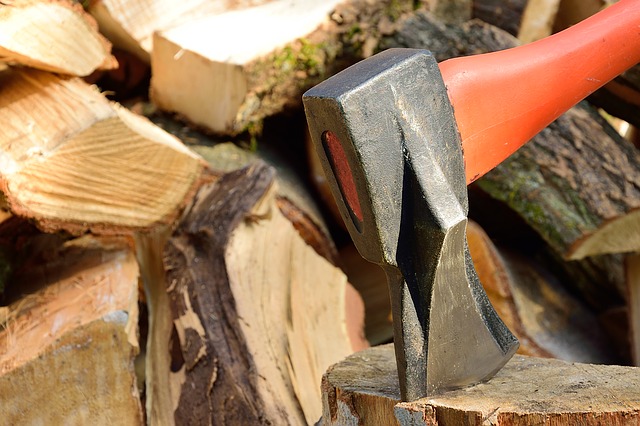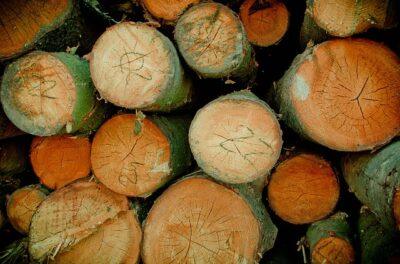Nothing beats the enveloping warmth from off-the-grid wood heat through the winter, and autumn is a perfect time for collecting firewood for your wood stove or fireplace. Use the following tips and you’ll fill your woodshed with the right wood from the right trees.
Your primary concern must be safety when looking for trees. Pro lumberjacks have the highest rate of work-related deaths of any other U.S. occupation. It doesn’t end there. A total of 25 amateurs, who were cutting down trees, died in 2012. When adding safety to the decision of selecting firewood trees, consider the following:
- Leaning vs. straight – Leave the leaning trees behind. Seek trees that grow straight and proud. The leaning tree category includes tree trunks angling one direction and then twisting off at a different angle. Crooked trees can fall in unpredictable ways.
- Long trunk vs. wide branches – When a choice exists, select trees with long trunks and branches on top, rather than expansively branched full trees, because with fewer branches, there’s a chance for fewer accidents while limbing the trees for firewood.
- Beware of lodging dangers – Timber growing in a tightly packed forest contains those nice, long-trunked trees. Felling a tree in these woods leads to lodging the treetop into neighboring trees. Trying to get a lodged tree to drop to the ground is hazardous. Leave thick-growth forests alone.
- Match tree size to chainsaw – Don’t attack a three-foot thick oak tree with a chainsaw containing a 12-inch bar. Forestry experts recommend chainsaw bars that are two inches longer than the diameter of the tree, which reduces safety issues with chainsaws kicking back into an operator’s head or face.
Certain tree types favor hot-burning firewood. When a choice exists, look for hardwood, selecting trees with higher density. Dense, or heavy wood once dried, contains higher heat per volume when burned. That means your firewood will burn hotter and longer.
Are You Prepared For A Downed Grid? Get Backup Electricity Today!
Desirable tree types in descending order, based on dry density measured in pounds per cord of firewood and rated as “excellent” for heat, are:
- Osage orange 4728
- White oak 4200
- Black locust 4016
- Ironwood 4016
- Shagbark hickory 3952
- Apple 3888
- Bitternut hickory 3832
- Honey locust 3832
- Burr oak 3768
- Mulberry 3712
- Maple 3680
- Red oak 3528
All wood types burn, so when no other choice exists, go ahead and take firewood from softwood trees. Just understand that in most cases, you’ll be burning more softwood to get the same heat value you’ll receive from most hardwood trees.
The above list of the dense firewood varieties is based on dry wood. Green, or wet wood, greatly hinders the heat production value of your firewood. If you cut green trees for firewood, give your new firewood at least two years of drying time in order to gain the full effect of dry wood heat value. Besides providing less heat, when you burn green wood, you fill the flue and chimney full of tar and creosote, which has the potential of turning into chimney fires if not removed.
Another option to obtaining dry firewood is to get your wood from trees that are already dead, since they already enjoyed some drying time, thereby cutting down on your overall firewood drying time. Just realize the following aspects about cutting down dead trees for firewood:
- Dead trees have wet areas – Just because a dead tree has dry wood doesn’t mean it’s thoroughly dry. The capillary action of the tree’s roots pulls water from the ground, even after the tree is dead. That means the bottom trunk of a dead tree is still wet. It will require drying time, but you might be able to get away with six months, instead of two years to dry your firewood.
- Dry wood at top – Pull the driest wood from the top third to half of a dead tree. Often this wood is dry enough to burn immediately.
- Beware of widow-maker branches – Look for branches broken loose and ready to fall from dead trees. When you see dead trees with broken branches hanging overhead, select a different tree.
Finally, enjoy your firewood gathering efforts. There’s nothing better than hoisting around hefty chunks of oak firewood for getting great exercise. Plus, you breathe clean air while looking forward to excellent off-the-grid wood heat this winter.
Sources: University of Nebraska, Utah State University.
Which is your favorite tree for winter heat? Share your advice in the section below:
 Off The Grid News Better Ideas For Off The Grid Living
Off The Grid News Better Ideas For Off The Grid Living





